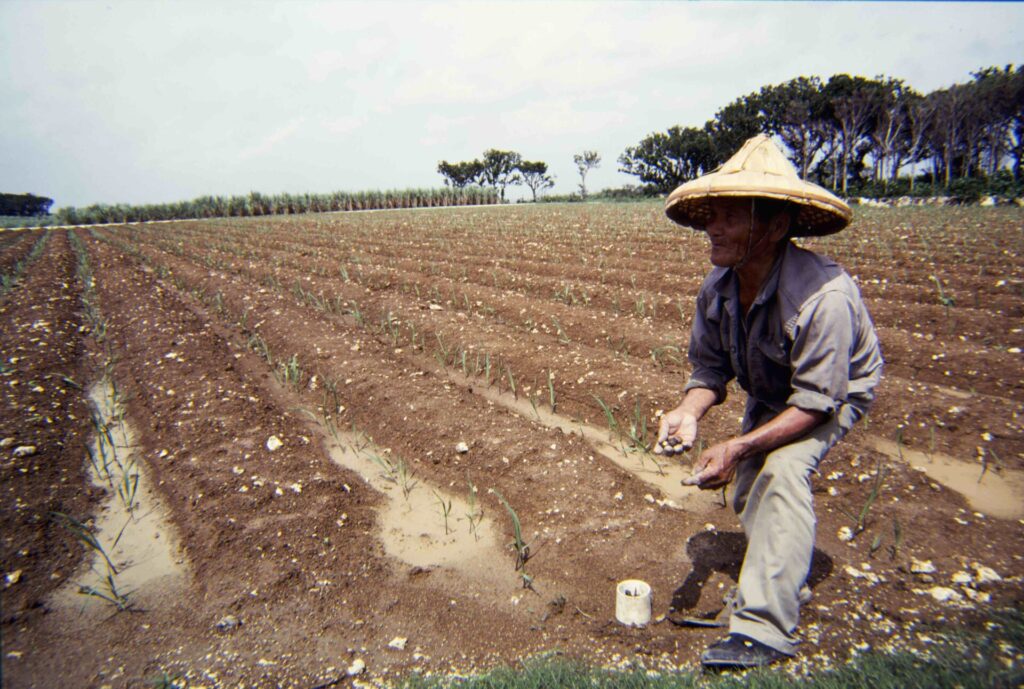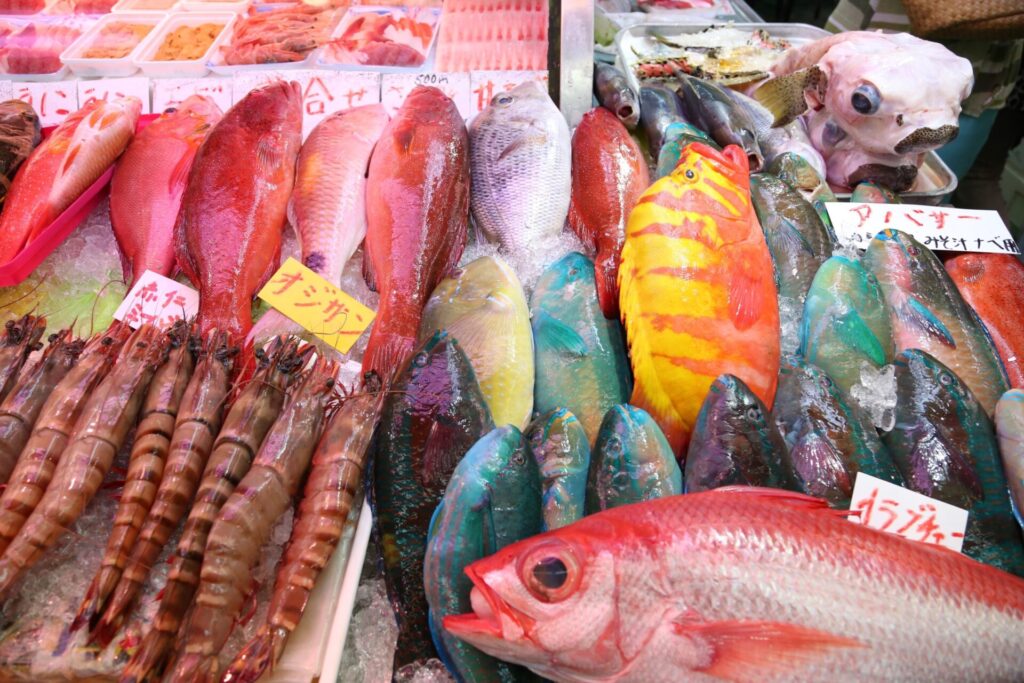Utchin

An ingredient appreciated by drinkers. It is said to be good for the liver and has achieved overnight fame thanks to the healthy diet trend in recent years. In standard Japanese, it is called ukon. With a unique flavor, it is indispensable in India as a spice for curries; in other words, turmeric.
The dictionary defines it as “a perennial plant in the ginger family.” It certainly looks like yellow ginger. It’s brewed to make tea or ground and sold in powder, but some brave souls eat it raw. I myself once witnessed such a scene, about five years ago.
It was at a local shrine in Shuri. The drunk man must have spent the night under the eaves of the household managed by a kaminchu1. He noticed me, just visiting to take photographs, and got up. While I was looking at him, thinking he was going to move out of the way, he pulled an utchin out of the neatly maintained garden, washed it with the water from the well, and started munching.
“You know, for a hangover, this (raw utchin) is the best. Want one?”
He kindly invited me to try, but afraid of the poisoning by blasphemy and food, I politely declined.
Later, I researched how utchin was used in Okinawa; people brewed it to drink, grated and mixed it into soups, sautéed it with pork, or even “ate it raw” in some places to treat hangovers, stomachaches, tuberculosis, and asthma. That drunk man was right.
Although utchin was used for medicinal purposes throughout the prefecture in the past, it seemed not to have been so common. After the Satsuma invasion of the Ryukyu kingdom (1609), the Shimazu government placed utchin, just like sugar, under their monopoly. They transported it to Sakai in Osaka to sell it as medicine and dye for a high price with which they apparently made a fortune. Consequently, the common people could no longer use it as they wished. They may have used it in secret, behind the back of the authorities, however, with the spread of new medicines in the four centuries that followed, its existence became slowly forgotten.
It came into the limelight again in the 90s. Processed in various ways, it is also exported to other prefectures. It regained popularity as a healthy tea in Okinawa as well. Especially around Matsuyama in Naha, where all kinds of drinking establishments from sex shops to high-class hostess clubs gather with older clientele, many shops stock utchin tea. They use it to dilute awamori. It prevents hangovers (so they say). Won’t the flavor of awamori disappear…?
My ojii2 used to drink just one gō3 of kūsu4 straight with a glass of water as a chaser, every night until he died at age 85. I prefer this style. For that, I think I can put up with munching on a raw utchin the next morning.
Editor’s Note:
- A priestess in the religion of Okinawa.
- Grandfather.
- 180 ml.
- Aged awamori.





































































































































































































































